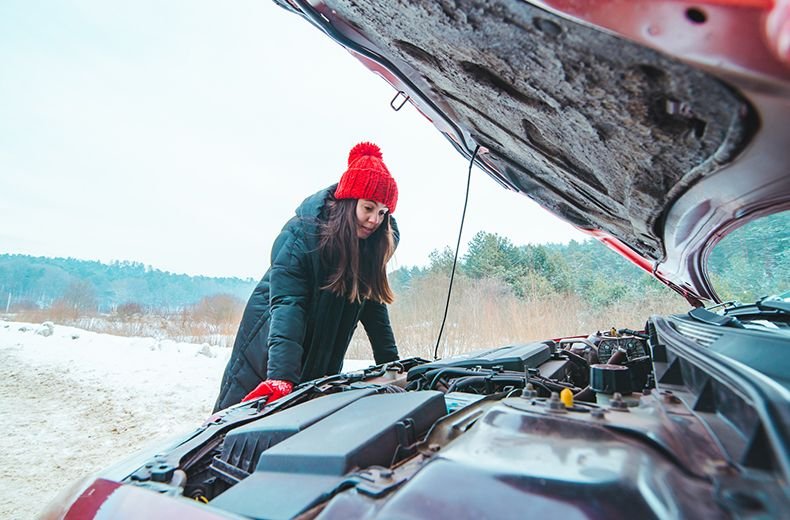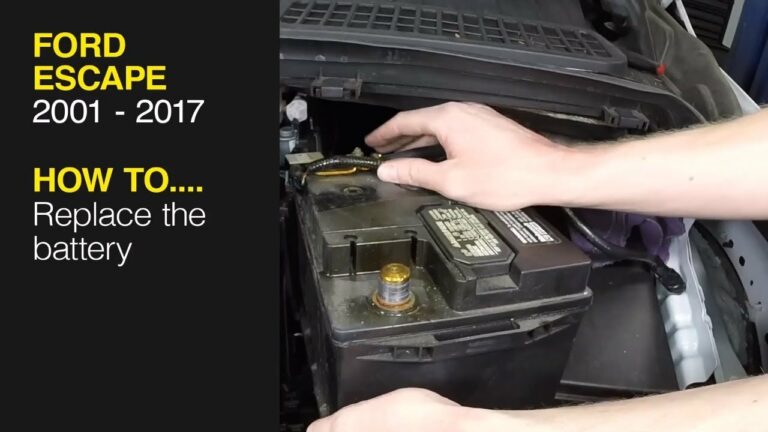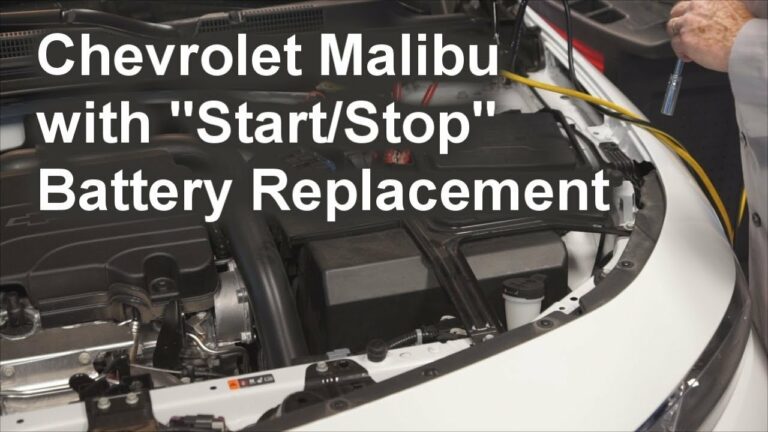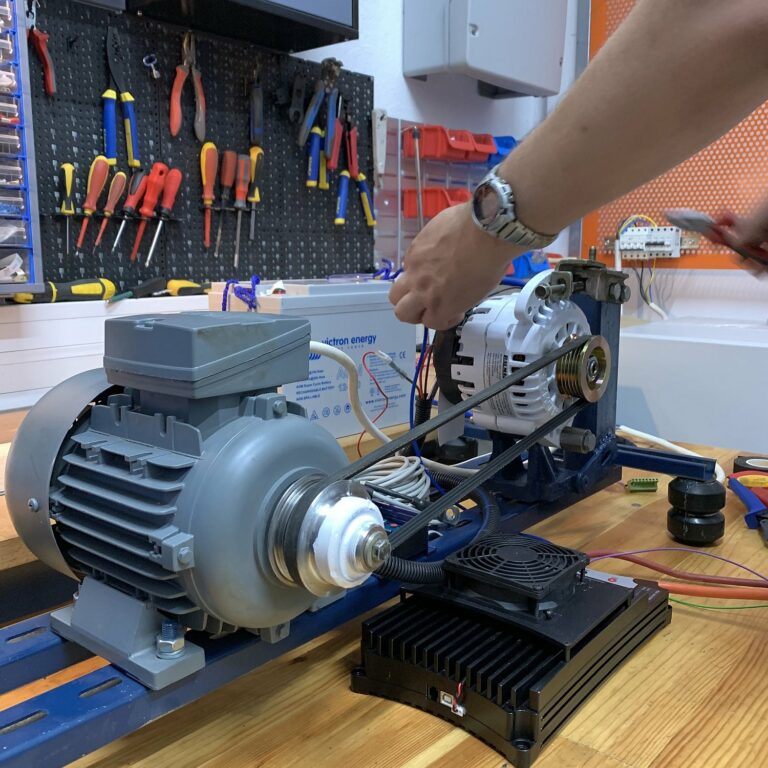How to Fix a Car Battery That Won’t Start the Car?
Today we discuss Car Battery That Won’t Start the Car. Frustrating, isn’t it? Well, worry no more because we’ve got the solution for you. In this article, we will show you how to fix a car battery that won’t start the car. Yes, you read that right. No need to panic or call for help just yet. With a little know-how and a few simple steps, you can get your car back on the road in no time. So, let’s dive right in and get you on your way!
How to Fix a Car Battery That Won’t Start the Car?
Understanding the Basics:
Your car battery is essential for starting your vehicle and providing power to various electrical components. However, if your car battery won’t start the car, it could be due to a range of issues. Before diving into troubleshooting, let’s understand the basics of a car battery and its operation.
A car battery is a rechargeable device that stores electrical energy used to start the engine and power the car’s electrical system when the engine is not running. It typically consists of six individual cells connected in series, producing an output voltage of around 12 volts.
Checking for Common Signs of Battery Failure:
Before attempting any repairs, it’s crucial to identify whether your car battery is indeed the culprit behind the starting issues. Here are some common signs of battery failure to help you diagnose the problem:
1. Dim headlights or interior lights
2. Clicking sound when turning the key
3. Engine cranks slowly or not at all
4. Dashboard warning lights flicker or remain illuminated
5. Loss of power to electrical accessories
If you notice any of these signs, it’s likely that your car battery needs attention.
Performing a Visual Inspection:
Before jumping to conclusions, it’s a good idea to visually inspect your car battery to spot any visible signs of damage or corrosion. Follow these steps:
1. Open the hood and locate the battery.
2. Inspect the battery case for cracks or bulges.
3. Check the battery terminals for corrosion or loose connections.
4. Look for signs of a leaking battery (fluid residue or discoloration).
If you find any damage or corrosion, it’s important to address those issues as they may be the cause of the starting problem.
Cleaning Corroded Battery Terminals:
Corroded battery terminals can impede the flow of electricity, causing starting issues. Cleaning them can often resolve the problem. Here’s how you can clean corroded battery terminals:
1. Wear safety gloves and protective eyewear.
2. Disconnect the negative (black) battery cable first, followed by the positive (red) cable.
3. Mix a solution of baking soda and water.
4. Using a wire brush, scrub the corroded terminals with the baking soda solution.
5. Rinse the terminals with clean water and dry them thoroughly.
6. Reconnect the battery cables, starting with the positive (red) cable followed by the negative (black) cable.
Cleaning the battery terminals can improve the electrical connection and potentially solve the starting issue.
Jump-Starting the Car:
If your battery is weak but not completely dead, jump-starting your car may get it running again. Here’s a step-by-step guide on how to jump-start your car:
1. Position the assisting vehicle close to your car, ensuring both engines are off.
2. Connect one end of the positive (red) jumper cable to the positive terminal on the dead battery.
3. Connect the other end of the positive (red) jumper cable to the positive terminal of the assisting vehicle’s battery.
4. Connect one end of the negative (black) jumper cable to the negative terminal of the assisting vehicle’s battery.
5. Connect the other end of the negative (black) jumper cable to an unpainted metal surface on your car’s engine block, away from the battery and fuel system.
6. Start the assisting vehicle’s engine and let it run for a few minutes.
7. Attempt to start your car. If it starts, let it idle for a while to charge the battery.
8. Disconnect the jumper cables in the reverse order of connection (starting with the negative cable on your car).
Jump-starting can provide enough power to start your car and recharge the battery, but it’s essential to address the underlying issue to avoid recurring starting problems.
Testing the Battery Voltage:
To determine if your car battery is the cause of the starting problem, you can test its voltage using a multimeter. Follow these steps:
1. Set your multimeter to the DC voltage setting.
2. Connect the positive (red) multimeter probe to the positive terminal of your car battery.
3. Connect the negative (black) multimeter probe to the negative terminal of your car battery.
4. Read the voltage displayed on the multimeter.
A fully charged battery should read around 12.6 volts. If the reading is significantly lower, it indicates a weak or discharged battery that may need recharging or replacing.
Recharging the Battery:
If your car battery is weak or discharged, recharging it might solve the starting issue. Here are the steps to recharge your car battery:
1. Remove the battery from your vehicle following the manufacturer’s instructions.
2. Use a battery charger compatible with your battery type.
3. Connect the charger’s positive (red) clamp to the positive terminal of the battery.
4. Connect the charger’s negative (black) clamp to the negative terminal of the battery.
5. Set the charger to the appropriate charging mode (e.g., normal or trickle charge).
6. Plug in the charger and turn it on.
7. Let the battery recharge until it reaches the manufacturer’s recommended voltage (usually around 12.6 volts).
8. Disconnect the charger and reinstall the battery in your vehicle.
Recharging the battery can often revive its performance and resolve starting issues caused by a weak or discharged battery.
Replacing the Battery:
If your car battery is old, damaged, or incapable of holding a charge, replacing it might be necessary. Follow these steps to replace your car battery:
1. Ensure the engine and all electrical accessories are turned off.
2. Disconnect the negative (black) battery cable first, followed by the positive (red) cable.
3. Remove any securing brackets or clamps holding the battery in place.
4. Carefully lift out the old battery and set it aside.
5. Clean the battery tray using a wire brush and baking soda solution if necessary.
6. Place the new battery in the tray, ensuring it is securely positioned.
7. Reattach any securing brackets or clamps.
8. Connect the positive (red) battery cable first, followed by the negative (black) cable.
9. Double-check all connections to ensure they are tight and secure.
10. Close the hood and start the car to confirm the new battery is working correctly.
Replacing the battery can provide a fresh start and eliminate starting issues caused by an old or faulty battery.
Seeking Professional Assistance:
If you’ve tried all the above steps and your car battery still won’t start the car, it may be time to seek professional assistance. A certified mechanic can diagnose the problem accurately and provide the necessary repairs or replacements.
Remember, attempting complex repairs without the required expertise may cause further damage to your vehicle or compromise your safety. It’s best to leave certain tasks to the professionals.
Routine Battery Care and Maintenance:
Prevention is always better than cure when it comes to car batteries. Adopting proper battery care and maintenance practices can extend its lifespan and minimize starting issues. Here are a few tips:
1. Regularly clean the battery terminals to prevent corrosion.
2. Check the battery’s fluid levels if applicable (some batteries are sealed and maintenance-free).
3. Ensure the battery is securely fastened in the tray to avoid vibrations.
4. Inspect the battery regularly for signs of damage or aging.
5. Park your vehicle in a shaded area during extreme temperature conditions.
6. Limit the use of electrical accessories when the engine is not running.
7. If you don’t use your vehicle frequently, consider using a battery maintainer or trickle charger.
What to do if your Car won’t Start
Frequently Asked Questions
Q: Why won’t my car battery start the car?
A: There could be several reasons why your car battery is not starting your vehicle. It could be due to a discharged or dead battery, corroded battery terminals, a faulty ignition switch, or a problem with the starter motor. It is important to diagnose the exact cause before attempting any fixes.
Q: How can I jumpstart my car battery?
A: To jumpstart your car battery, you will need a set of jumper cables and another vehicle with a working battery. Connect the positive (+) terminal of the dead battery to the positive terminal of the working battery, then connect the negative (-) terminal of the working battery to a metal part of the engine block in the car with the dead battery. Start the engine of the vehicle with the working battery, and then try starting your car.
Q: What should I do if jumpstarting doesn’t work?
A: If jumpstarting the car battery doesn’t work, it may indicate a deeper issue. It is recommended to have a professional mechanic inspect the battery and related components to determine the exact problem. They will be able to perform diagnostic tests and provide a proper solution, which may involve replacing the battery or repairing other electrical components.
Q: How can I clean corroded battery terminals?
A: Cleaning corroded battery terminals is essential to ensure proper electrical connections. Start by disconnecting the negative (-) terminal, followed by the positive (+) terminal. Mix baking soda with water to create a paste and apply it to the terminals using a toothbrush. Scrub the terminals gently, removing any corrosion or buildup. Rinse with water and dry the terminals thoroughly before reconnecting them.
Q: Can extreme cold weather affect the car battery’s performance?
A: Yes, extremely cold weather can negatively impact a car battery’s performance. Cold temperatures reduce the battery’s ability to provide sufficient power, making it harder for the engine to start. To mitigate this, park the car in a garage or use a battery blanket or heater to keep the battery warm. Regular maintenance, including checking the battery’s charge and keeping the terminals clean, is also important to ensure optimal performance in cold weather.
Q: Should I replace my car battery myself?
A: While replacing a car battery can be done by a vehicle owner, it is recommended to consult a professional mechanic. They can ensure proper installation and also check for any underlying issues that may have led to the battery failure. If you are unsure or inexperienced, it is best to seek assistance from a qualified technician to avoid potential damage to the electrical system.
Final Thoughts
If your car battery fails to start the car, there are several steps you can take to fix the issue. First, check the battery connections to ensure they are clean and secure. If necessary, clean the terminals and tighten any loose connections. Next, try jump-starting the battery using jumper cables or a portable jump starter. If the battery still won’t start, it may be time to replace it. Regular maintenance, such as checking the battery’s voltage and keeping it clean, can help prevent future starting issues. By following these steps, you can effectively fix a car battery that won’t start the car.




